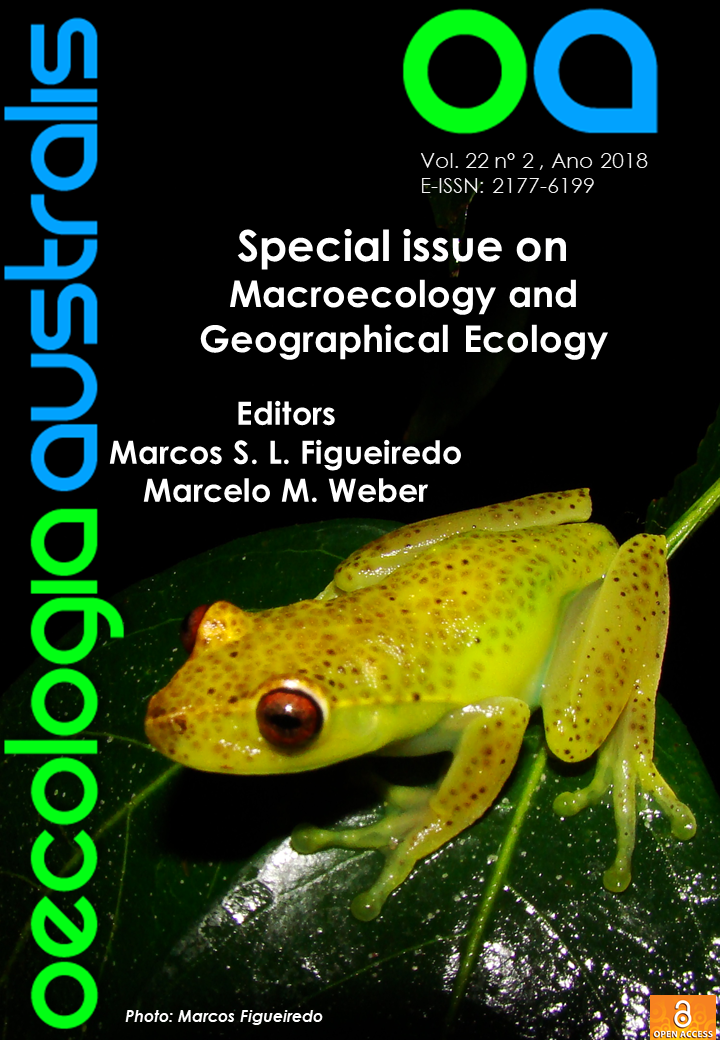PHYLOGENETIC DIVERSITY AS A KEY TO UNDERSTAND MECHANISMS OF NEW WORLD MARSUPIALS DIVERSIFICATION (DIDELPHIMORPHIA: DIDELPHIDAE)
DOI:
https://doi.org/10.4257/oeco.2018.2202.06Palavras-chave:
environmental energy, macroecology, productivity, spatial heterogeneity, topographyResumo
Phylogenetic diversity is a measure that can provide information about the history of diversification of a lineage and the events that shaped contemporary communities, as macroevolutionary processes leave marks on the relationships of the lineages. However, this approach has been applied primarily in studies on local scales, and rarely has been employed to analyze regional or continental patterns. Here we mapped spatial patterns that could identify regions of intense diversification or dispersion of the New World marsupials (order Didelphimorphia) by analyzing the spatial variation of species richness and phylogenetic diversity (PD). Based on the phylogeny and occurrences of the Didelphimorphia species we calculated three diversity measures, and applied a model selection by information criteria approach to identify the relative importance of four environmental determinants: potential evapotranspiration, productivity, topography, and the number of ecoregions. Species richness and PD are highly correlated, and both are associated to productivity, topography, and number of ecoregions, while relative PD (rPD) is associated to potential evapotranspiration and topography. Productivity showed a clear positive relation with species richness and PD, consistent with the productive energy, but rPD was affected by potential evapotranspiration, which points to a role of environmental energy in the process of diversification. This study is pioneer in testing and confirming effects of the productive and environmental energy on species diversification as other studies analyzing the same questions neither could isolate the effects of the two energy measurements due to their collinearity, nor did make any distinction between energy hypotheses. Physical geography and ecological differences among habitats can shape biogeographical patterns and drive speciation in continental faunas, leaving marks on their phylogenetic register. Comparing patterns among other autochthonous taxa whose evolutionary history and geographic range is congruent to the Didelphimorphia could provide interesting clues about the processes that shaped the diversification of Neotropical fauna.


